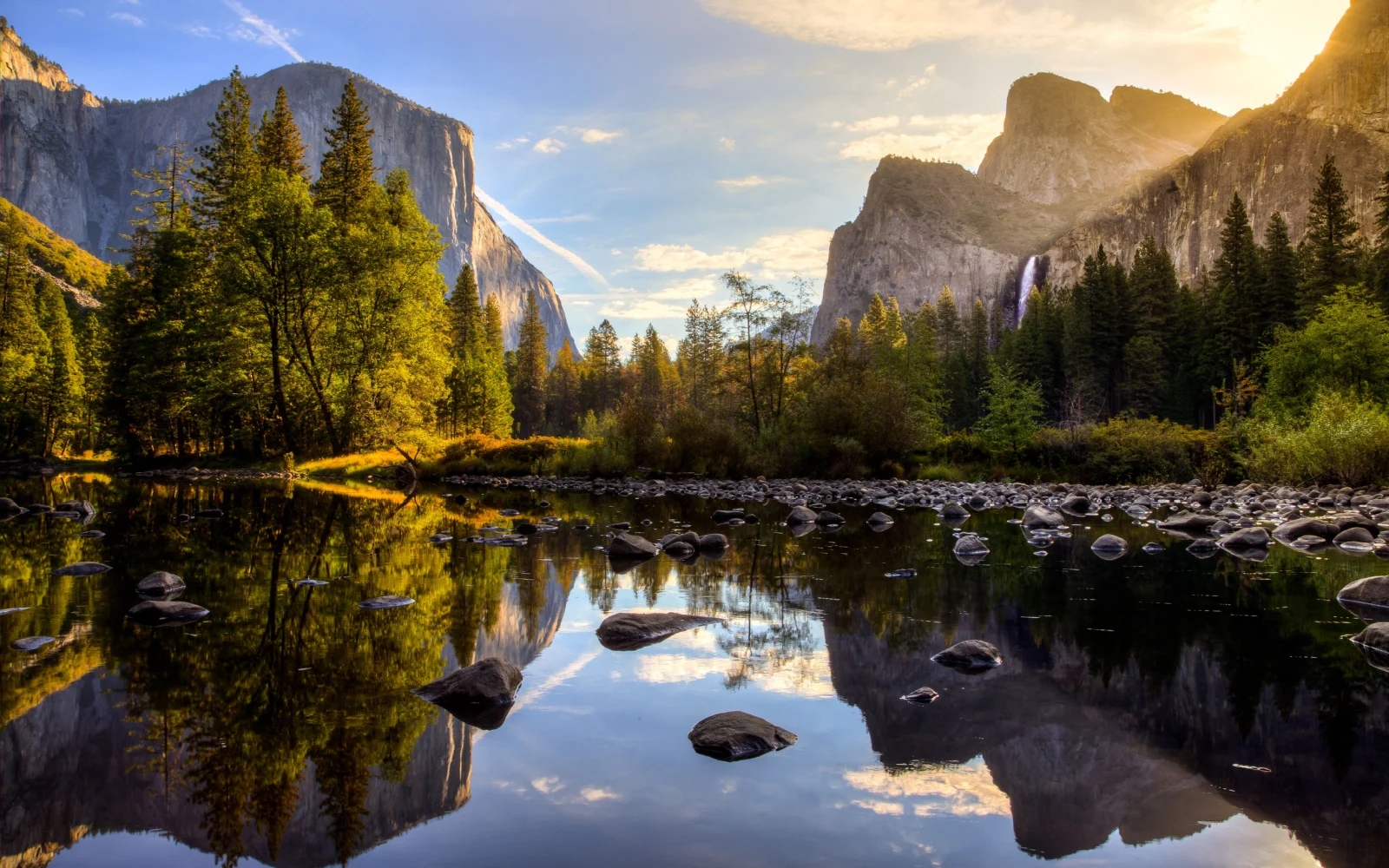Yosemite National Park is one of the most attractive places in the United States for nature lovers. The park receives over 3.5 million people each year, making it one of America’s most popular travel destinations.
There is plenty to see once you get to Yosemite. There are amazing natural formations that make for perfect viewpoints, such as Yosemite Falls and Tunnel View.
Rock climbers or those who enjoy watching climbers flock to El Capitan and Half Dome. Plus, take in the amazing sequoia trees or hope for a glimpse of the wildlife that calls Yosemite home.
However, safety is a concern any time you plan an adventure into the wilderness. Plus, going into nature does not guarantee that you will be protected from more human threats to your safety such as crime.
But don’t worry — our travel experts created this guide to help you figure out if it is safe to go to Yosemite now or not. Let us be your guide!
Is Yosemite Safe to Visit in 2024?
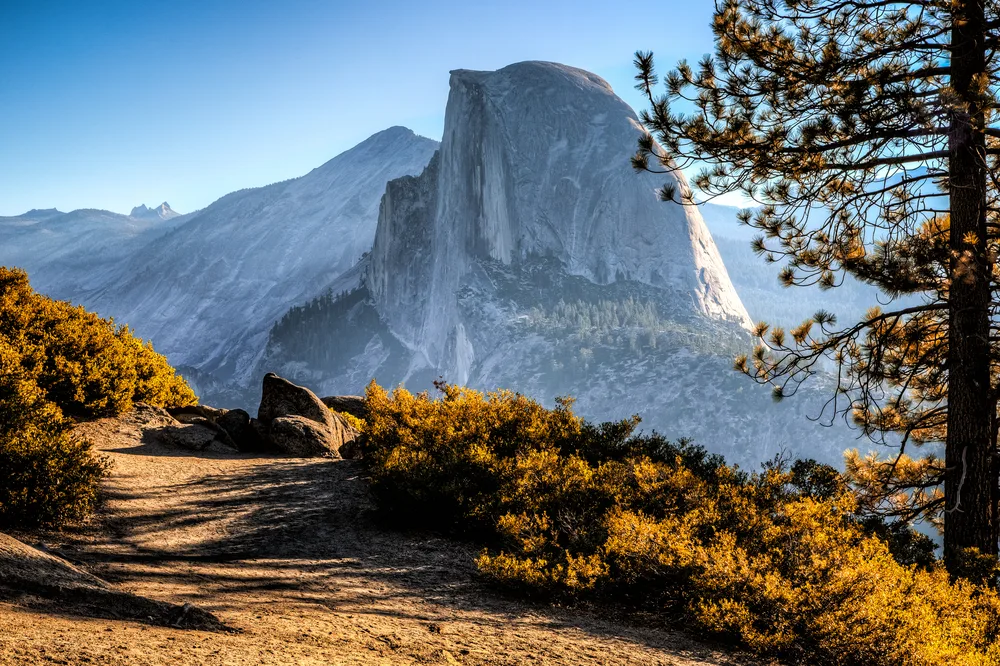
Stephen Moehle/Shutterstock
Right now, Yosemite is safe to visit. However, conditions can change at a moment’s notice due to extreme weather and other natural disasters such as forest fires, faster than we can update this article.
It’s best to check up-to-date information for Yosemite before you head over. In fact, a few different factors can affect the safety of your trip to Yosemite.
These include:
- Heavy rainfall
- Heavy snowfall
- Landslides
- Avalanches
- Forest fires
Although Yosemite is a National Park, that park has nothing to do with the tame park you’ll find in your hometown or where kids play.
The Park is still a very wild area, meaning that nature is often out in full force. Yosemite’s rangers and authorities do their best to keep visitors safe in the park no matter when they go.
However, there are times when they have to close certain parts of the park to visitors or close the park altogether to visitors. In the summer of 2022, authorities had to close part of the park to visitors due to the threat of wildfires.
In March 2023, roads to the park were closed due to heavy snowfall and the park itself was closed for weeks on end since it received over 15 feet of snowfall.
Events such as forest fires and snowstorms can occur with little warning. The best way to stay prepared for potential closures or safety information is to go on the official National Park Service website.
The authorities update with information about closures. Usually, only certain roads or regions of the park are closed, but sometimes the whole park area is unsafe to visit. If the park service says that Yosemite is not safe to visit, stay away.
To ignore their warnings is to risk your life. Even if Yosemite is open and safe for visitors, it’s important to take precautions every time you go into nature, especially wild nature such as what you’ll find in Yosemite.
The National Park Service offers helpful tips for hiking safely on their website.
Make sure that you take necessary supplies with you, including a flashlight, headlamp, enough water, and food. Bring medical equipment and sturdy footwear.
It is safer to hike in a group, but make sure you have a plan in case people in your group get separated. Always tell someone who is not on your trip where you are going so they can alert emergency services if you do not check back in time.
Finally, know your limits. You don’t want to push yourself on a multi-day hike if you’ve only done hikes that are just a few miles long before.
Yosemite has strict rules in place for ensuring the safety of visitors as well as animals and plants. Don’t attempt to approach any animals you might see, try to pick the plants, or drive or camp away from designated areas.
Cycling is allowed in the park, but only on paved trails as they crush other parts of the landscape. If you are driving some of the scenic routes in the park, drive slowly, follow posted speed limits, and be sure to put snow chains on your tires when it is required.
Crime in Yosemite
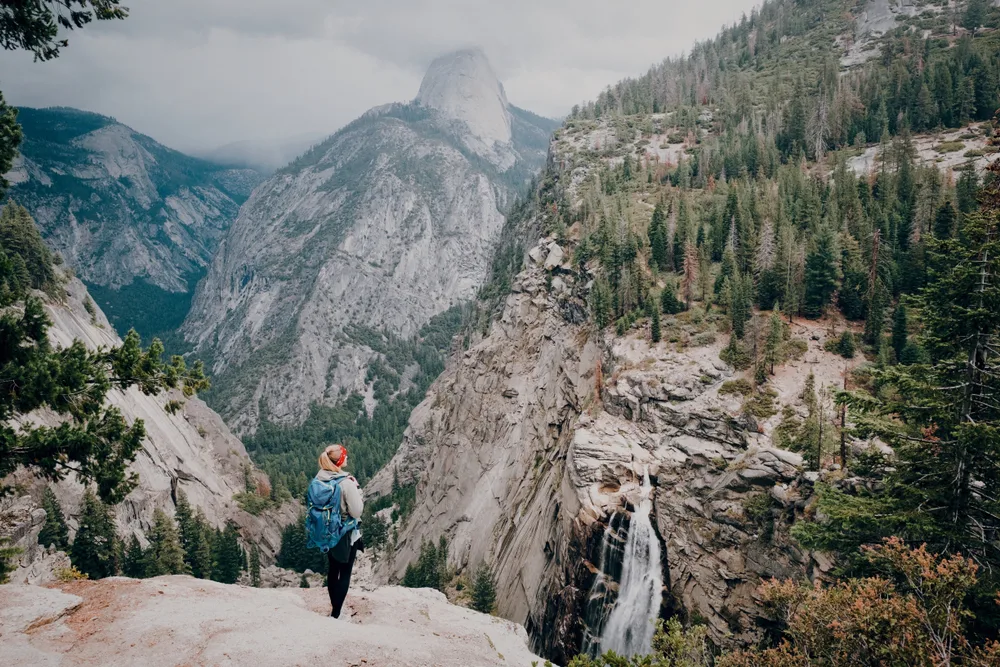
Klara Zamourilova/Shutterstock
You may not think that you need to worry about crime when you visit Yosemite. After all, you are visiting pristine nature, far away from the rat race!
It is true that crime isn’t your primary worry when visiting a national park such as Yosemite. Concerns about nature are more of a problem. However, you would be surprised how frequently crime occurs in national parks.
A recent article explored how there are about 15 murders annually in national parks. Most go unsolved because the parks are vast and don’t have many law enforcement resources.
One such death in Yosemite inspired a new true crime TV show, “Wild Crime.” Your trip to Yosemite is extremely unlikely to involve murder or any other violent crime.
However, you should be on your guard against other forms of crime, such as petty theft. Yosemite sees millions of visitors each year, especially in the high season of July and August. The vast crowds provide the perfect cover for potential thieves.
According to CrimeGrade, the property crime rate for Yosemite National Park is 29.27 incidents per 1,000 people. 66.8% of total property crimes are theft, while burglaries (mostly vehicle break-ins) make up 22.2% of total property crimes.
The nearby city of Yosemite Valley’s property crime rate is above the national average, but that’s probably because of the disproportionate ratio of full-time residents to visitors skewing the crime rate calculation.
Overall, the incidents of crime are fairly rare and as a rule non-violent. You know it’s an area that doesn’t see a lot of crime when a man illegally squatting in a vacation home near Yosemite made national news.
You shouldn’t forget about all your common-sense precautions just because you’re heading into nature, but you also don’t need to be on your guard all the time here either.
Vehicle Break-Ins
Vehicle break-ins are some of the most common crimes reported in national parks. While they are rarer in Yosemite, there is still a possibility that they might occur.
The Park gets a lot of visitors, especially in the summer high season, and it’s possible that one of your fellow visitors also has sticky fingers. When you park your car in one of the designated parking lots, a few basic precautions are usually enough to deter any potential break-ins.
Of course, the best precaution is to make sure that you don’t leave anything valuable in your car. Take phones, wallets, IDs, and expensive cameras with you, even when you’re just getting out of the car to check out a scenic look-out point.
Try to stop by your hotel or campsite first thing when you arrive at Yosemite, so you don’t have luggage in your trunk. If you have to leave some things in the car, take some other precautions.
Put possessions in the trunk or glove compartment, where they will be out of sight. Don’t open your trunk unless absolutely necessary as you don’t want people to see what you have in your car.
Lock your doors and trunk and roll up the windows (you can leave them open a crack if it is too hot, but just a crack). Keep in mind that the culprits behind vehicle break-ins often walk on four legs, not two — bears are the biggest perpetrators of break-ins in the park!
Make sure that you keep anything that might smell attractive to a bear, such as food or toiletries, in a secure place, not in your car. Bears can smell the smallest piece of food through the metal of a car door.
Petty Theft
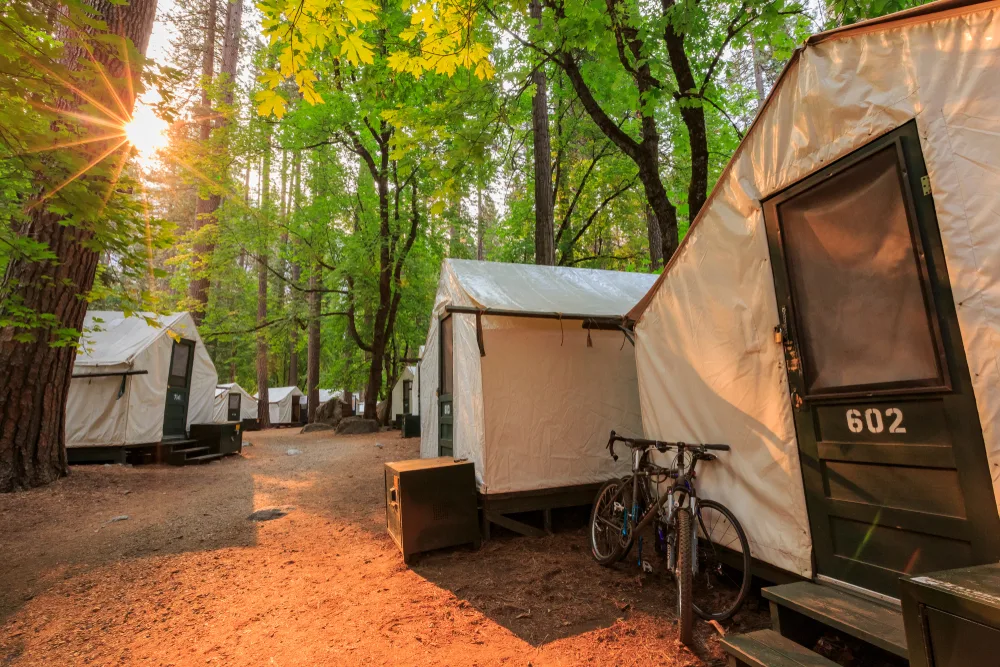
Kit Leong/Shutterstock
Other forms of petty theft happen in Yosemite, such as pickpocketing, gear theft, and bicycle theft. However, the rates of these crimes are fairly rare. Many examples of “theft,” particularly bicycle theft, are caused by mix-ups.
Still, it doesn’t hurt to be cautious. If you are camping in Yosemite, it is usually safe to leave your camping gear in your campsite as you hike around the area, but don’t leave any truly irreplaceable valuables such as phones, cameras, and wallets.
Around crowded areas in the park in high season, there might be a risk of theft.
You don’t need to be on your guard constantly, but some basic precautions such as not leaving valuables unattended and storing them in a secure pocket go a long way to preventing theft.
Avoiding Bad Areas
There are no really bad areas in Yosemite National Park. Some busier campsites have a bit of a reputation for theft incidents.
If you’re camping in popular sites such as Camp 4 or Little Yosemite Valley, don’t leave valuables unattended during the day, but most camping gear will be safe.
Depending on weather conditions, certain parts of the park may be closed to visitors. This changes frequently, so check the official park website for any alerts before you book your trip and before you head out.
Things to Consider
Here are a few additional safety tips for visiting Yosemite National Park:
- The risks of visiting Yosemite change with the seasons. Winter in Yosemite is beautiful, but the park sometimes gets heavy snowfall that makes it unsafe to visit. In the summer, Yosemite is often at risk of forest fires and again some areas of the park may be closed. Shoulder season is the best time to visit the park and when you’re least likely to encounter weather-related closures.
- Summer is the high season for Yosemite National Park. Crowds of people descend on the park in July and August. You can still visit but be prepared for crowds. You may have to book popular campsites well in advance.
- Bears are a source of danger in Yosemite. They are not intentionally dangerous, but they are extremely food-motivated, which often leads to some pretty scared campers. Stay away from bears, make noise to scare them away if they start approaching you, and be very careful with how you store food, waste, and even wrappers as bears can smell the smallest trace of food.
- If you’re hiking, wear layers, as the temperature changes drastically throughout the day and at different elevations of the park.
Frequently Asked Questions
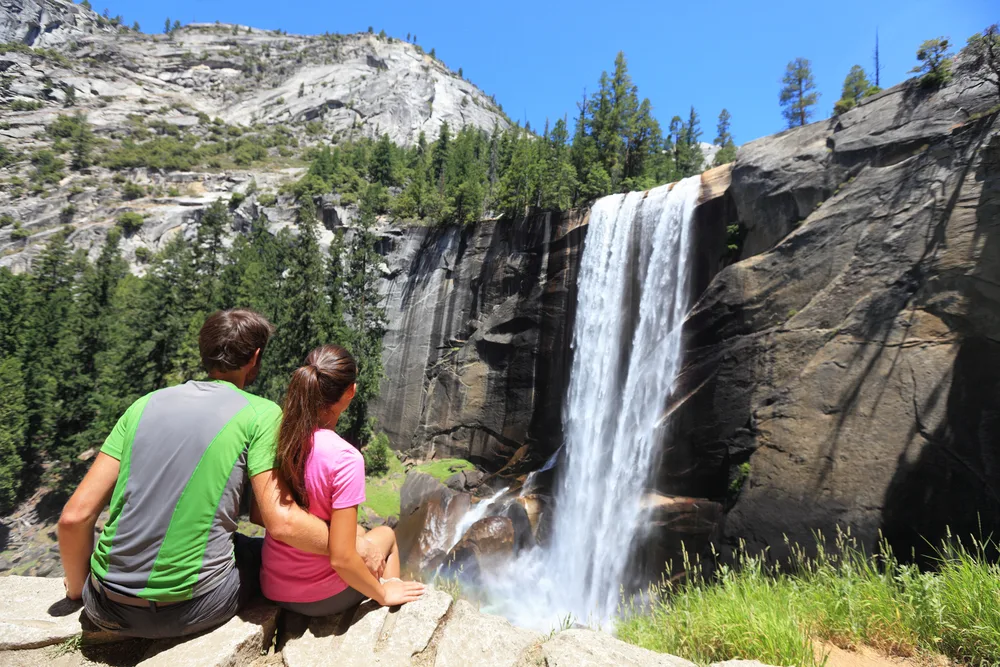
Maridav/Shutterstock
Here are some common questions other visitors to Yosemite have asked in the past:
Is it a good time to visit Yosemite now?
As of the time of writing, it was a good time to visit Yosemite. There are no hazardous conditions that make parts of the park unsafe to visit. Plus, spring is one of the best seasons for visiting Yosemite, although crowds will pick up as the weather turns to summer.
Is Yosemite currently in fire danger?
Yosemite is not currently in fire danger. Fire season picks up in late spring and stretches through summer into fall in California. However, the situation can change at any moment, so it’s best to check on the official Yosemite website before you go.
Is it safe to drive to Yosemite now?
Right now, it is safe to drive to Yosemite. However, in the winter, the roads sometimes close due to heavy snowfall, and in the summer, they can be affected by fire season. Always check road conditions before driving down.
When not to go to Yosemite?
July and August are when most people go to Yosemite, so if you can go some other time, try to go then. July and August are also when the weather is hottest, driest, and most at risk for fire season.
How many days in Yosemite is enough?
The answer depends on what your interests are. If you just want to check Yosemite off of your bucket list, then one or two days are enough. However, if you are a nature lover that wants to explore all of the trails, then you will need at least a week.
So, Is Yosemite Safe to Visit Now?
Right now, Yosemite is safe to visit, but that can change at any moment along with the weather conditions. Always check on the park website beforehand for up-to-date information about safety information and be sure to only stay in park areas open to visitors at the moment. Happy travels!



